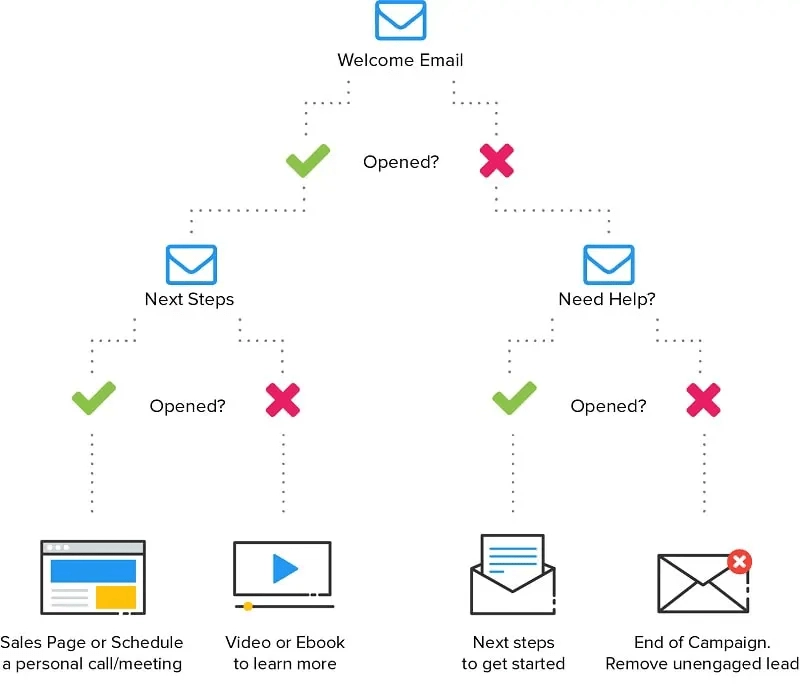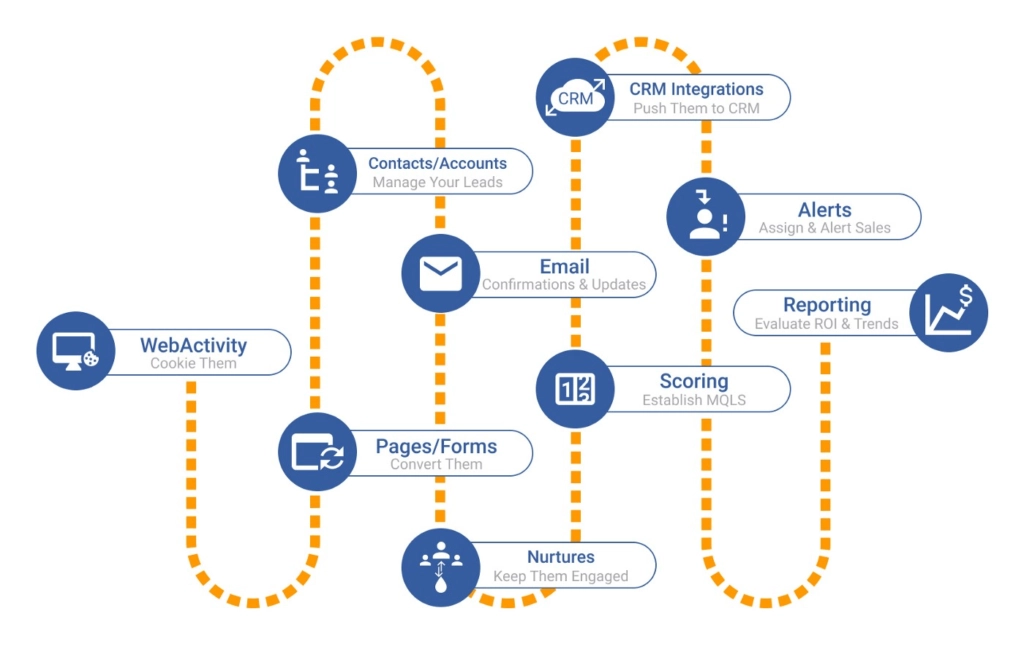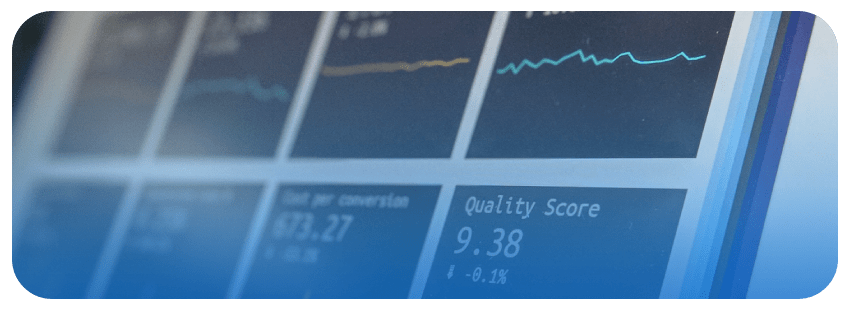Follow this 6-step guide to help you implement a successful marketing automation strategy.
Marketing automation is insanely powerful for any business. Using marketing automation software is one of the best ways for businesses to save time and effort while boosting sales. To pull this off, you’ll need to use the right marketing automation strategy.
A well-planned automation strategy ensures you deliver the right messages to the right people at the right time. Ultimately, this means your marketing automation tools will perform better, and your campaigns will achieve more successful results.
In this guide, we’ll break down the basic steps you need to take to create a winning marketing automation strategy.
- What is Marketing Automation?
- Why You Need a Carefully Planned Marketing Automation Strategy
- What Can You Include in Your Marketing Automation Strategy
- How to Create a Marketing Automation Strategy: 6 Steps
- Understanding the Customer Journey
- Marketing Automation Software
What is Marketing Automation?
As the name suggests, marketing automation is the process of automating various marketing and sales tasks. By using the right marketing automation tools and workflows, you can generate leads, nurture them, and pass them along to your sales funnel – all automatically.
A major focus of this is sending automated messages to specific customers and prospects, and automatically targeting people who take certain actions online.
Marketing automation is achieved through automated messaging based on triggers. Basically, a lead signs up for your mailing list and is sent an automated email. They click on the email and are sent another email. They click on that email, and another, related email sends to them.
This is a basic example of an email drip campaign, but it’s a good representation of how marketing automation solutions work.
Automation triggers could also be things like abandoning a shopping cart, or viewing a certain web page.
Ultimately, marketing automation helps marketing teams save time without missing any valuable marketing opportunities. Automation also ensures you send highly targeted, relevant messages to the right leads at the right time.

Why You Need a Carefully Planned Marketing Automation Strategy
Marketing automation is all about sending the right content to the right person at the right time. You need to have a carefully-planned marketing automation strategy to achieve this.
While marketing automation isn’t designed to replace your existing email marketing strategies, it is used to add a valuable complement. With marketing automation, you can ensure all leads get sent the same important content. You can also send specific, targeted content based on different actions.
This will help you achieve many things. It can help to nurture and warm up new leads. It can offer valuable sales and promotional materials to people at the right time – like welcome discounts. It can also help you offer a more personalized email marketing experience.
There are various marketing automation strategies that exist, but the most important thing to remember is to add value to the prospect. To achieve this, you’ll need to understand what the prospect is interested in and where they are in their buying journey.
This is where a carefully planned marketing automation strategy comes into play.
To learn more about how automation can help your business, you can check out the book “Automate Your Busywork” by Jotform’s CEO Aytekin Tank. In this book, you will discover what is possible when you offload repetitive tasks and how automation tools can transform your ability to focus on what matters in your business.
What Can You Include in Your Marketing Automation Strategy?
Marketing automation software can help you do many different things. While it’s important to save time and automate wherever possible, it’s also important that you do this strategically. If you automate too many areas of your communications, you will lose personalization and possibly harm your overall marketing efforts.
So, what can you automate?
The most common marketing automation strategies include lead nurturing sequences, automated sales sequences, and welcome sequences. These are generally the best strategies to take.
Don’t try to automate processes that require human involvement. If the process is not predictable or repetitive, then don’t automate it.
The whole point of automation is to save you time and let you scale more easily, while still providing highly targeted marketing experiences. However, if the customer experience is hurt by marketing automation, then step in as a human.

How to Create a Marketing Automation Strategy: 6 Steps
While every business and marketing strategy differs, the same approach to creating a marketing automation strategy applies. Here are the steps you can take to help you achieve success with marketing automation.
1. Set a Goal
Always start with the end in mind.
You need to know what you want to achieve with your marketing automation strategy. All of your automated content and messages need to build up and align with this end goal.
By starting with a goal, you can create a series of messages, or marketing actions, that lead up to this goal.
Make sure the goal is measurable so that you can adjust your marketing automation campaign to help you achieve it.
2. Set a Trigger
Marketing automation can only happen if you have a trigger. This is the event, or action, that launches the automated marketing activity.
The thing that triggers your automated campaigns needs to relate to the end goal you’re trying to achieve.
What can a trigger include? This could cover any action that the user takes (or doesn’t take). Some common triggers include:
- Completing a lead capture form (and receiving a welcome drip campaign)
- Purchasing a certain product
- Abandoning a shopping cart
- Clicking a certain link in an email
- Not opening emails
- Signing up to a mailing list on a specific landing page
- Downloading a piece of gated content
Depending on what action is triggered, a related marketing automation sequence can follow. This is effective because the sequence can be personalized based on the trigger.
3. Create Your Marketing Content
Now you need to prepare the content that you’re going to automate. This should be done with your end goal in mind.
The type of content you create really depends on who your audience is and what you’re trying to achieve.
While this will differ with each marketing automation campaign, make sure to add value and highlight benefits. This will help make any kind of campaign more effective.
When creating your marketing automation content, always remember the buyer’s journey. Your aim should be to send the right message to users at the relevant stage of their journey.
While this might sound complex, it’s really not. The general idea is that you should provide educational content if a user is at the top of the funnel, or in the early stage. Only push a sale if they are ready for it. If you send sales-focused content too soon, a lead won’t be interested.
You can follow our complete guide to email marketing examples to help you understand the different types of marketing messages that you can send.

4. Create Your Audience Segments
This is an important part of marketing automation that many people overlook.
Once your users have set off a trigger, and have been sent campaigns, they will end up taking an action. The different actions that users take should result in them being sent to different lists.
Doing this lets you send more personalized and relevant content to each list – which helps you achieve better marketing results.
If all of your leads are in one list, your messages won’t always be relevant to each lead. This is a quick way to get your leads to unsubscribe or ignore your messages.
5. Implement Your Marketing Automation Strategy
Now you have everything prepared, the next step is to put your campaign into action.
To do this, you will need to use the right marketing automation software.
With a tool like Wishpond, setting up automated marketing campaigns is easy. The great thing about Wishpond is that you use a single platform for generating leads, managing your email marketing campaigns, setting up automations, and managing your leads. This is all interconnected.
6. Review Your Campaign and Monitor the Results
Marketing automation is all about setting it and forgetting it. However, this doesn’t mean you ignore your campaigns as soon as you have launched them.
It’s important to monitor your campaign performance over time. Establish what KPIs and metrics you need to follow to monitor the success of the campaign. This should be related to your overall campaign goal.
By monitoring performance you will be able to make adjustments and changes to the campaign as you need. You will also be able to know when you have achieved your goal, and if your marketing automation strategy needs to be ended.
Understanding the Customer Journey
Any successful marketing automation strategy is built around the customer journey. So, it’s essential to understand what this looks like for your business.
This is something that will differ between B2B marketing and B2C marketing. Generally speaking, B2B marketing has a longer sales cycle than B2C.
The reason this is important is that the main purpose of marketing automation sequences is to make more sales. This means that when leads reach the end of your email sequence, they will need to be placed into your sales funnel. This is where marketing and sales automation works together.
So, you will need to have a clear map of what your marketing funnel looks like, then create your automation campaigns to align with this.
While funnels and sales cycles can differ, there are three main parts of your marketing funnel. These are:
- Awareness stage – When a prospect discovers your brand (lead generation). This is achieved by increasing brand awareness through a strong social media presence, publishing educational content, search engine optimization, and meeting your target audiences before they’re actively looking to make a purchase.
- Interest and consideration stage – When the prospect looks into your brand and considers you as the solution to their problem (lead nurturing). This is achieved through marketing campaigns like email marketing automation and strategic content marketing (webinars, videos, etc).
- Sales – When the prospect decides to make a purchase (conversions). This is really where the marketing journey ends, and a sales rep takes over.
At each stage, your email content needs to be relevant. At the same time, you need to segment leads based on their actions in each stage.
So, understand the customer experience and the journey they would take from discovering your brand to becoming a customer. This will help you create a more relevant, targeted, and successful marketing automation strategy.
Marketing Automation Software
Any great marketing automation strategy is only as good as the software used to power it. You cannot run automated campaigns without a marketing automation tool.
Your software is what lets you set up automated workflows, which is what lets you determine triggers, segment leads, and more. The best marketing automation solution should make this easy to set up while offering plenty of options for your automation journey.
Wishpond’s marketing automation platform is one of the best solutions. With Wishpond, you can easily set up automated workflows based on a wide range of factors. Manage your leads from the integrated leads database, and schedule automated emails through the email marketing software. The platform also includes various lead-generation tools to help kickstart your marketing automation campaigns.
Summary
Marketing automation is easier than you think. Any business could (and should) be using it to make more sales. You just need to have a well-planned marketing automation strategy to get this right.
By following the steps and tactics above, you’ll be able to achieve better results from your automation campaigns, save time, and improve the way you grow your business.
Want to learn more about marketing automation? Check out some of our related guides below:
- How Marketing Automation Works and What it Can Do
- Complete Ecommerce Marketing Automation Guide Your Business Can Use (+ 10 Strategies)
- What is B2B Marketing Automation and How Does it Work?
- What is a Drip Campaign and How to Create Them [+ Drip Campaign Templates]

